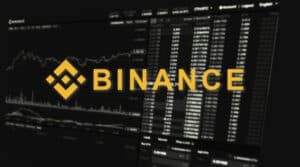
Transforming Storage Space: Investigating Communal Satellites & Eternal Storage on Decentralized Platforms
- The Decentralized Architecture of Storj Uses Global Computing Resources
- Salesforce Blazes a Trail in Renewable Energy via Blockchain-based RECs
The Decentralized Architecture of Storj Uses Global Computing Resources
In contrast to centralized service providers like Google Cloud and Amazon Web Service, the acceptance of decentralized storage systems is expanding. Being financially friendly and having the safety of processes are the fundamental causes of this transition.
Sia, Storj, and BitTorrent are a few famous blockchain-based systems. One of these platforms, Storj Next, made by Storj, promises more flexible decentralized options for Web 3 & Web2 businesses. With a focus on fostering community, the most recent upgrade includes a new economic model that makes the Storj ecosystems more accessible.
Through blockchain & encrypting, Storj is a decentralized system enabling digitized data storage that uses underutilized storage on devices worldwide. To prevent any corporation or group from accessing all the information, it divides the material into small bites and shares it around the network.
Exclusive wallet identities on Storj accounts potentially access unlimited storage through a revolutionary crypto-based functionality introduced by the decentralized storage platform. In addition, the innovation will enable network users to receive rewards for making STORJ deposits via Ethereum-based payments with the network’s native STORJ crypto.
The new architecture will meet the storage requirements of node providers and individual satellite owners. In addition, Storj asserted that its most recent version would enable Web3 and Web 2 organizations to lower cloud expenses without compromising functionality or dependability.
The most recent upgrade will support staking, letting network users earn passive money from their communal satellites and node administrators.
Salesforce Blazes a Trail in Renewable Energy Via Blockchain-Based RECs
Salesforce, a company specializing in customer relationship management (CRM) business, signed a deal with renewable energy developer Powertrust to buy 280,000MWh of renewable energy credits over the following eight years.
The purchase will be conducted using D-RECs (distributed renewable energy certificates), a brand-new financial tool designed to promote the expansion of microgrid projects in developing nations. To value and verify distributed renewable electricity plants globally, South Pole Carbon Asset Management and Powertrust started the initiative in 2020.
The well-established REC market is expanded into the D-REC market, although there is a difference in scale: one REC equals 1MWh, while a D-REC equals 1kWh.
The D-RECs initiative has developed into a diverse player’s open-source project. The UN Development Programme has recognized it for advancing sustainable development global goals under economic and social affairs.
Salesforce has committed to supplying all its electricity needs with renewable energy by purchasing 280,000MWh of D-RECs from Powertrust. This investment is anticipated to fund distributed renewable projects worth about $65 million in Southeast Asia and sub-Saharan Africa, among other places.
Megan Lorenzen, a leader in Salesforce’s efforts to reduce carbon emissions in the power industry, expressed that more than 95% of companies buying renewable energy are in Europe and North America.
She emphasized the importance of addressing other world regions in this effort. Therefore, Salesforce’s purchase of D-RECs will be focused on acquiring projects in niche areas where they can assist in bringing about environmental and social advantages.
While not a standard, the Distributed Renewable Energy Certificate (D-REC) is similar to the International Renewable Energy Certificate Standard (I-REC). Both on-chain and off-chain components make up the D-REC platform. On-chain is developed upon this Energy Web system, a general populace blockchain created mainly for the energy industry.




